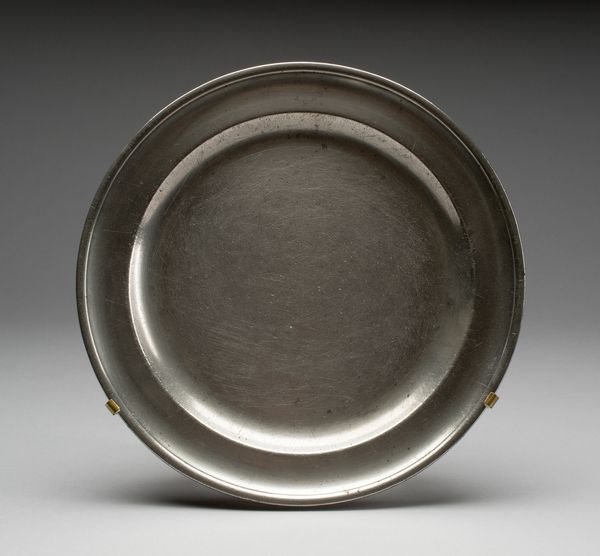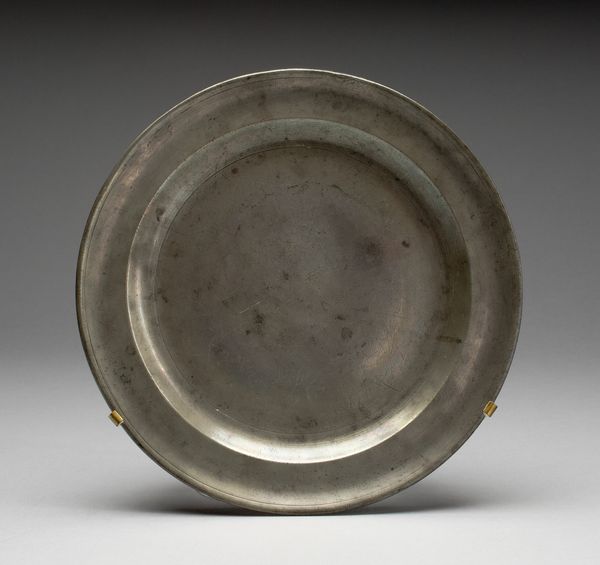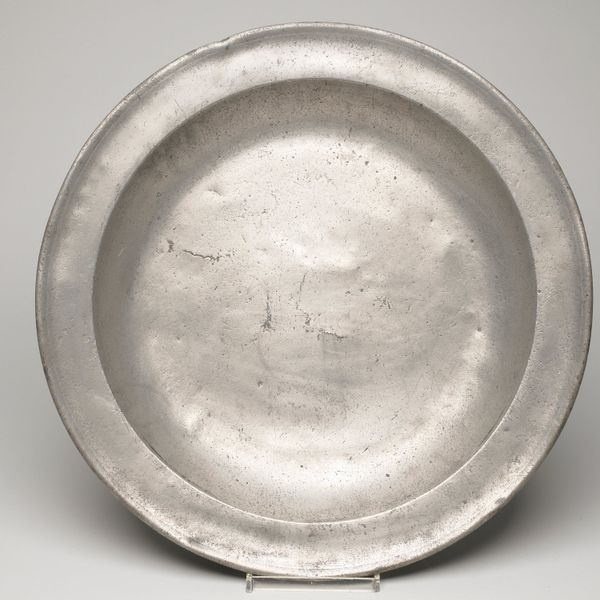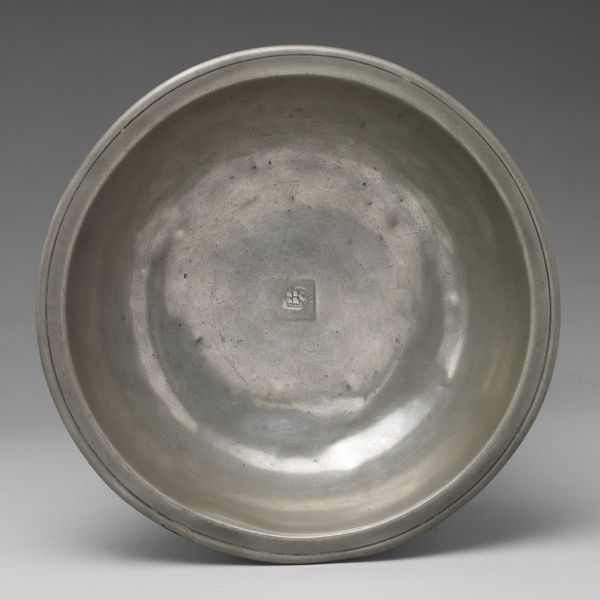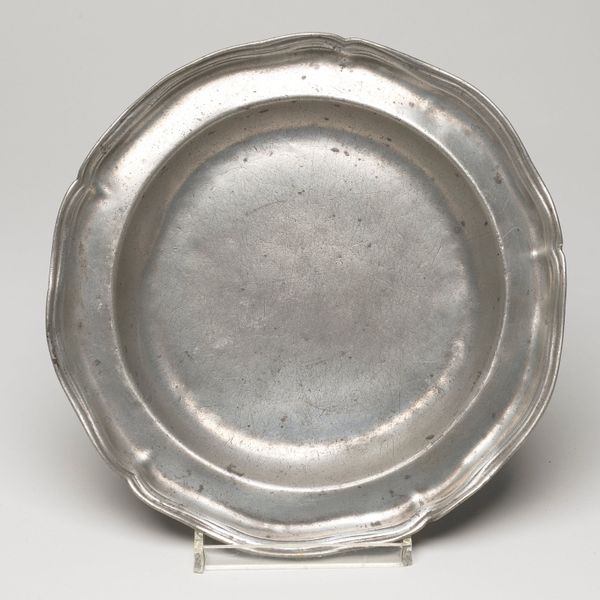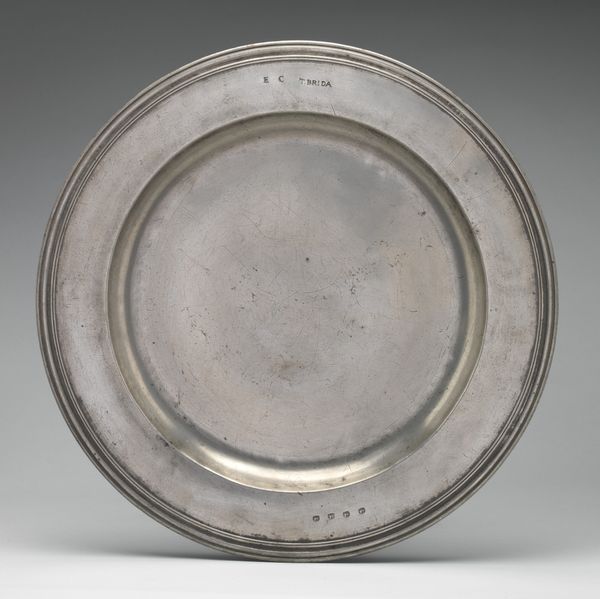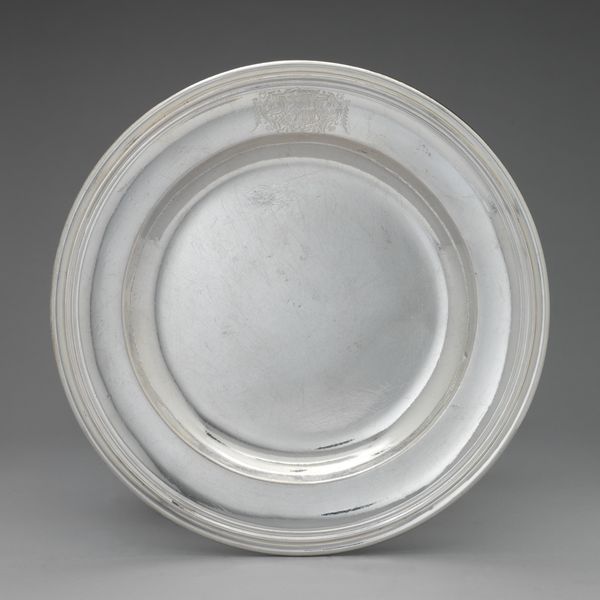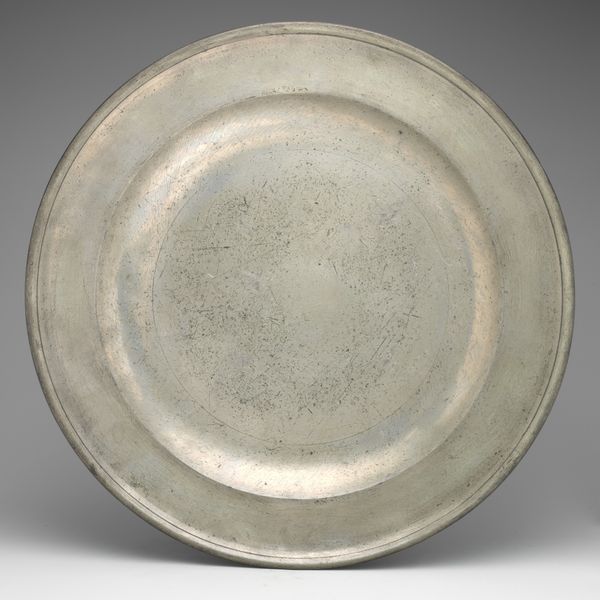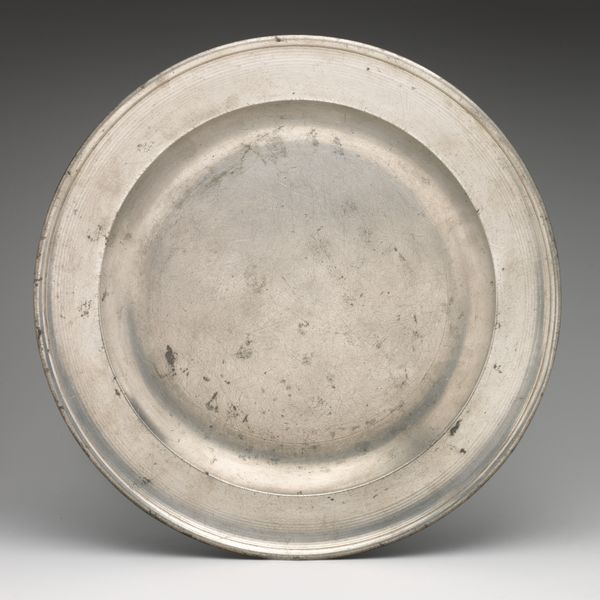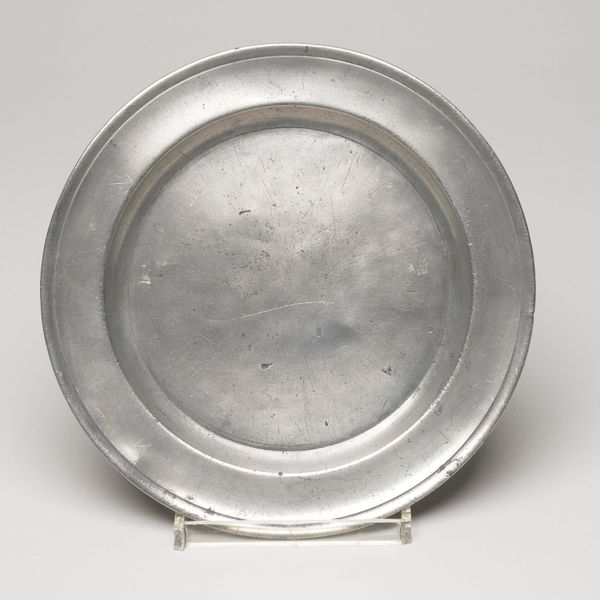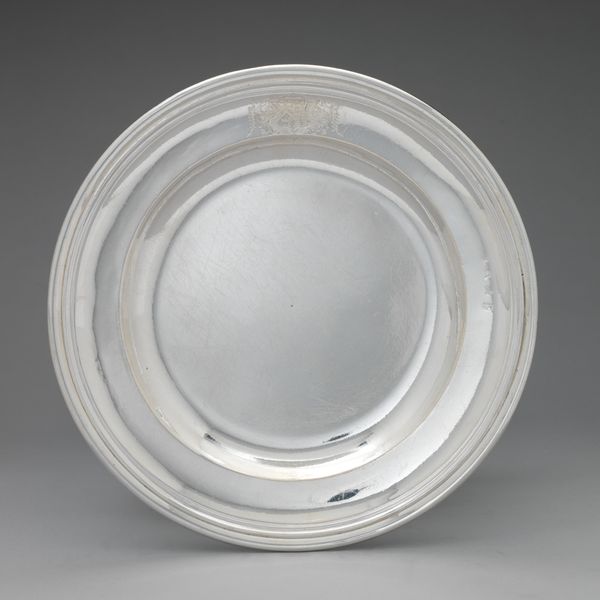
metal, ceramic
#
byzantine-art
#
metal
#
ceramic
#
vessel
#
stoneware
#
ceramic
#
decorative-art
Dimensions: Diam. 16.5 cm (6 1/2 in.)
Copyright: Public Domain
Curator: Looking at this "Plate," made sometime between 1825 and 1827 by Boardman and Company and currently held at The Art Institute of Chicago, I am immediately struck by its muted sheen. Editor: It's understated, almost somber. The pewter seems aged, not quite shining. It lacks overt adornment, giving it an egalitarian feel, doesn’t it? Almost utilitarian. Curator: Exactly. And it speaks volumes, especially if we consider the societal norms around dining and social class in the early 19th century. Pewterware became increasingly common, offering a more affordable alternative to silver for a rising middle class. Editor: So, this wasn't simply about owning a plate, but about participation in a developing, burgeoning consumer culture and evolving class identity. Curator: Precisely. Furthermore, considering that this was produced by a company rather than an individual artisan highlights evolving production methods. We’re seeing industrial shifts impacting even the dining table. Think of it within larger discourses surrounding democratization, industrialization, and social mobility during that time. Editor: Right. It makes one wonder about the meals served on it. Family dinners? Shared meals reflecting the burgeoning spirit of a nation carving out its identity? How does this seemingly mundane object perform and participate in social change? Was it at a table where discussions about abolition or women's rights might have happened? Curator: These objects served witness to dialogues of great consequence, underscoring the important truth that everyday items carry resonances that reflect broader societal shifts. Editor: The modesty of the plate and design lends it, perhaps counterintuitively, to multiple stories: individual narratives intertwined with commercial enterprise that helped define that specific historical moment. Curator: Absolutely. The intersectionality between its aesthetic minimalism and its profound historical resonance truly enriches our interpretation. It’s far more than a plate. It is a vessel containing multiple levels of cultural narratives and possibilities. Editor: Yes, engaging with this seemingly simple pewter plate provides valuable historical perspectives for interpreting an early American experience in ways that speak to enduring questions regarding equality and self-determination.
Comments
No comments
Be the first to comment and join the conversation on the ultimate creative platform.
